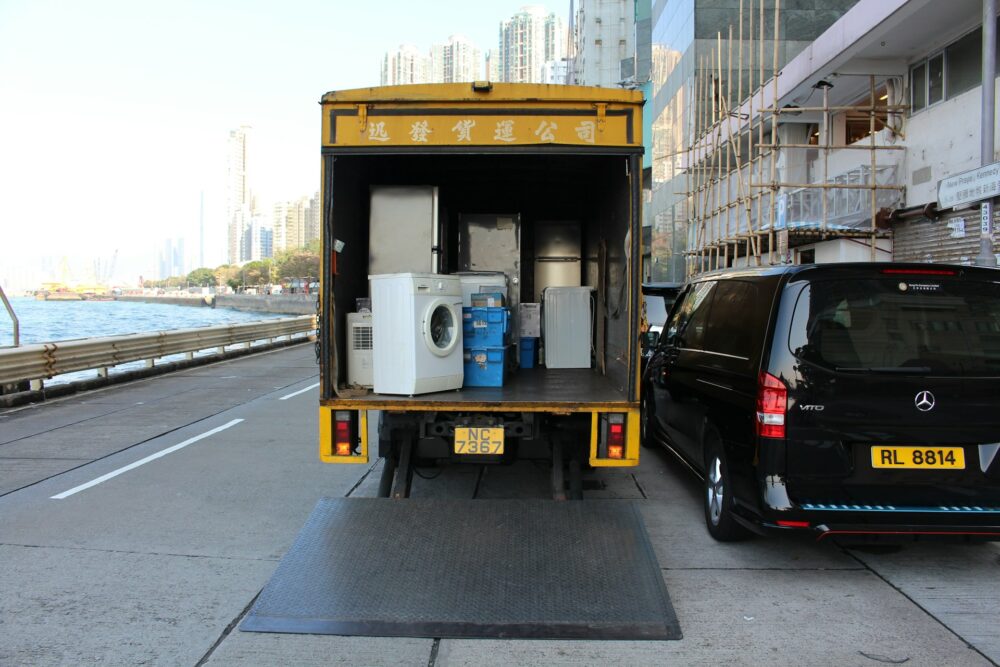Business
Shaking Up the Moving Market: How Innovation Will Change the Industry in 2024
This year, the demand for moving services is expected to increase, fueled by a shift towards renting rather than buying homes. For sustainable growth, however, market players need to adopt innovative business practices and leverage technology.

The recent economic downturn in the U.S. has impacted the moving market, leading to a decline in demand. With fewer homebuyers in 2023, there were also fewer moves, and many industry participants have been grappling with budget constraints among clients due to inflation.
Currently, many Americans are looking to relocate from expensive areas like California and New York to more affordable areas such as Texas and North Carolina. Only 15% of respondents recently surveyed by Architectural Digest said nothing would compel them to move in the future.
Apart from inflation, climate change is another big factor impacting the market, with one in 10 homes in the U.S. affected by natural disasters. According to Forbes Homes, people are moving away from areas prone to wildfires, floods and extreme temperatures.
Moving expenses, however, are putting a brake on plans by many Americans who might otherwise want to change locations. Costs for a long-distance haul typically range from $4,200 to $12,100, with distance and home size being the two biggest factors impacting the price.
More than half of the 26% of Americans who expressed a desire to relocate said they don’t plan to do so because of the costs involved. This means that efficiency and customer retention will be key focal points for the moving industry in coming years. Technology will also be a huge part of this strategy.
Here are just a few innovations set to disrupt the moving services industry and improve cost efficiency in coming years:
Autonomous vehicles
As self-driving vehicles evolve, moving services are set for transformation. Tesla Cybertruck has finally arrived. In the beginning of 2024, the company hosted a delivery event in Austin, showcasing bulletproof doors, straight-line speed, and other features.
Thanks to EVs, moving company teams won’t have to take care of relocations from start to finish. They’ll only need personnel to load and unload the truck. Although it doesn’t sound like a lot, cybertrucks could have profound implications for the moving industry, increasing efficiency and cutting costs.
Wearables
Wearable suits called “exoskeletons” can augment human strength and endurance, and can help double a moving company’s earnings. In China, for example, a number of businesses in Beijing, Shanghai, and other cities are using this technology to boost efficiency.
Exoskeletons are particularly important in buildings without elevators. They can increase movers’ strength and prevent back pain or other health issues, such as bad knees.
After integrating exoskeletons in our company, we’ve noticed a significant improvement in productivity. Wearables help to record and analyze moving data so that owners can receive timely feedback on performance.
As they get lighter and easier for movers to wear, I believe speciality removal exoskeletons are definitely the industry’s future.
Artificial intelligence
AI became the hottest technology of 2023. Although the moving industry traditionally innovates at a slow pace, this year could mark the onset of widespread disruption.
Our company uses AI in customer service when responding to reviews and requests. But there’s also untapped potential for enhancing the efficiency of sales and operations.
AI-powered solutions could reduce relocation costs by automatically identifying packaging materials and providing accurate final estimates. The technology could optimize routes, assign drivers, and perform additional coordination tasks.
What’s next?
During the 2022-2027 period, the U.S. moving services market is expected to grow by $3.92 billion, according to Technavio. The main driving factors are expected to be strong demand in corporate, government, military, and other sectors. Escalating housing costs could further contribute to this trend, as a growing number of individuals choose to rent rather than buy.
For many years, the moving services industry was known as one of the most traditional and ossified. In order to boost profits, most owners believed in saving on everything, ranging from labor to equipment. There was no systematic approach to running a business, no automation, or innovation.
Times are clearly changing now. As the industry evolves, traditional approaches will no longer suffice, and adopting modern technologies is essential for sustainable growth in the moving services market.
__
(Featured image by Theo Dorp via Unsplash)
DISCLAIMER: This article was written by a third party contributor and does not reflect the opinion of Born2Invest, its management, staff or its associates. Please review our disclaimer for more information.
This article may include forward-looking statements. These forward-looking statements generally are identified by the words “believe,” “project,” “estimate,” “become,” “plan,” “will,” and similar expressions. These forward-looking statements involve known and unknown risks as well as uncertainties, including those discussed in the following cautionary statements and elsewhere in this article and on this site. Although the Company may believe that its expectations are based on reasonable assumptions, the actual results that the Company may achieve may differ materially from any forward-looking statements, which reflect the opinions of the management of the Company only as of the date hereof. Additionally, please make sure to read these important disclosures.

-

 Crowdfunding1 week ago
Crowdfunding1 week agoPMG Empowers Italian SMEs with Performance Marketing and Investor-Friendly Crowdfunding
-

 Markets5 days ago
Markets5 days agoMarkets Wobble After Highs as Tariffs Rise and Commodities Soar
-

 Markets2 weeks ago
Markets2 weeks agoThe Big Beautiful Bill: Market Highs Mask Debt and Divergence
-

 Africa2 days ago
Africa2 days agoORA Technologies Secures $7.5M from Local Investors, Boosting Morocco’s Tech Independence

























